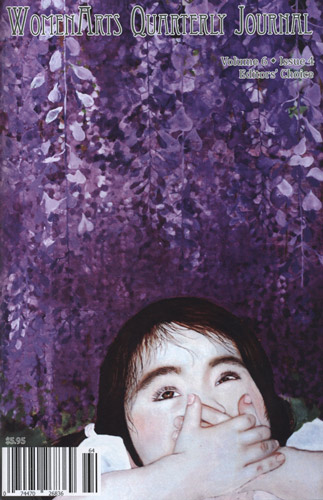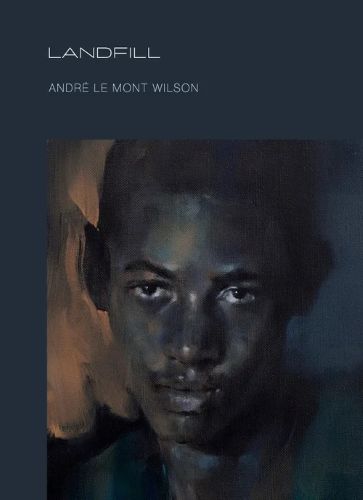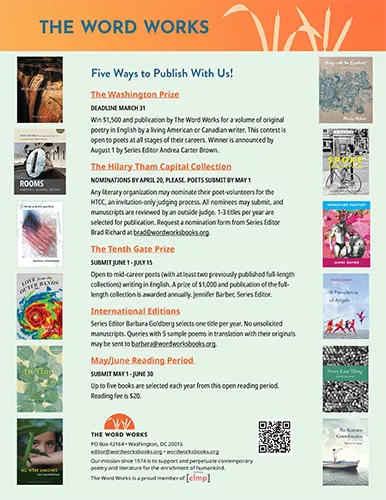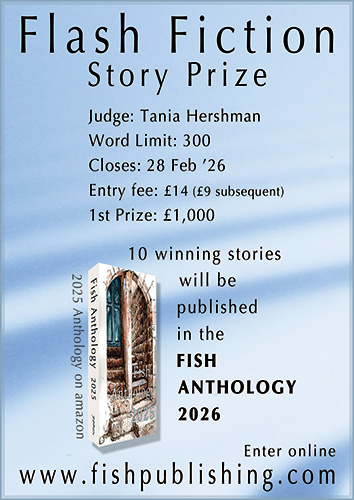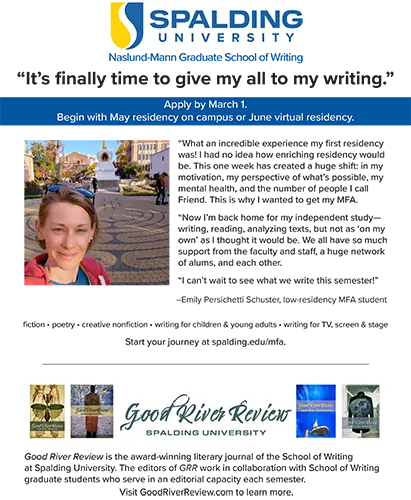To wrap up 2016, WomenArts Quarterly Journal decided to run an Editors’ Choice issue of the best pieces published in recent years. Among those chosen are two fictions, Midge Raymond’s “Side Effects” and Stephanie Selander’s “The Exchange.” These women couldn’t be more effective in their storytelling.
To wrap up 2016, WomenArts Quarterly Journal decided to run an Editors’ Choice issue of the best pieces published in recent years. Among those chosen are two fictions, Midge Raymond’s “Side Effects” and Stephanie Selander’s “The Exchange.” These women couldn’t be more effective in their storytelling.
In Raymond’s work, Tracey, a college sophomore, is recovering from eye surgery. Her mother is a real piece of work, and I hope she is not based on anyone close to Raymond. “[Tracey’s] mother had taken her in for an otoplasty to pin back her ears when she was six years old.” This is followed by laser treatment at nine and skin resurfacing at 16. Mom’s controlling doesn’t stop there. She is not only maddeningly critical, but does mean things like hiding Tracey’s pain meds. Will Mom get her comeuppance?
Selander’s speculative story is about the Exchange building, a place where you heal by having sex. We meet a woman known only as Angel who is still mourning her late husband Mark. Her boss and, of all people, her father, urge her to heal her grief at the Exchange. Angel gives in, even though finding the idea distasteful. Her feelings are exemplified in a sentence toward the end of the story: “[ . . . ] his clothes slip from his shoulders and his waist, as my slacks and my blouse are discarded to reveal my second-best bra and panties.” You could almost miss that ingenious phrase, “second-best bra and panties,” that lets the reader know first-bests were always for Mark.
Kae Sasaki draws attention to the cover of this volume with an oil on silver-leafed panel titled “Allegory II.” It is repeated in the art section along with another of her oils titled Post Office. Both feature precious little girls. They’re not identified as Sasaki’s daughters, though in an article on gallerieswest.ca she states “I do have two daughters and they have become a prominent subject in my work.”
Jamie Vasta’s Fillide 1596 is an exquisite portrait of a man done with glitter on a wood panel. This is her chosen medium, and it tempts the finger to touch. Other unusual materials for artwork comprise Gina Lee Robbins Providence. She is a mostly self-taught artist, and she used foam gutter guard, wool roving, and chicken egg shells in this fascinating piece.
Since all the poets showcased are editors’ picks, I knew up front they’d be winners. Among the standouts is María Luisa Arroyo’s “Soldier You, Exile You:”
The more you shared memories that broke
off inside you, the longer I stayed every time you hit
me. At nineteen, I thought that was love.
Cindy King’s “En Masse: Provincetown” paints this vivid picture in the third of eight stanzas:
The beach is a sand orphan, many men, none smiling,
biceps bulging from shirt sleeves. One weeds a wife
from the wine-red zinnias.
Elsewhere, Devi K. Lockwood begins “Fireman’s Prayer” in a worshipful, though weary, mode and ends up outraged:
Father, in your throne,
do you hear me? I said stop already.
Don’t keep running out on me, dad,
not when I need you the most. [ . . . ]
I don’t need no man like you,
you hear?
The essay category features Ann Harleman’s fresh take on writing in “Letter to a Young Writer,” addressed to her grandson Brendon. She applies traditional writing rules to life situations. For example, anyone familiar with writing how-tos has come across “Show, don’t tell.” “And in life?” she writes, [ . . . ] ‘Show, don’t tell’ is the rule in the natural world. [ . . . ] I’ve learned that the most effective way to let other people know what I feel is to show it.” Then there’s “Kill your darlings,” about which Harleman writes, “If there’s a phrase or an image in your draft that makes you think, [ . . . ] ‘Damn! That’s good,’ leave it out. Why? Because it attracts attention rather than serving the story as a whole.” She follows this with examples of darlings in life she wished she’d killed.
WomenArts Quarterly Journal satisfies a niche with its concentration on women-identified artists. Why not grab a copy and enjoy the full flavor of what women are writing about? You’ll see why these were selected as Editors’ Choice.
[www.vivacepress.com/waq.html]

